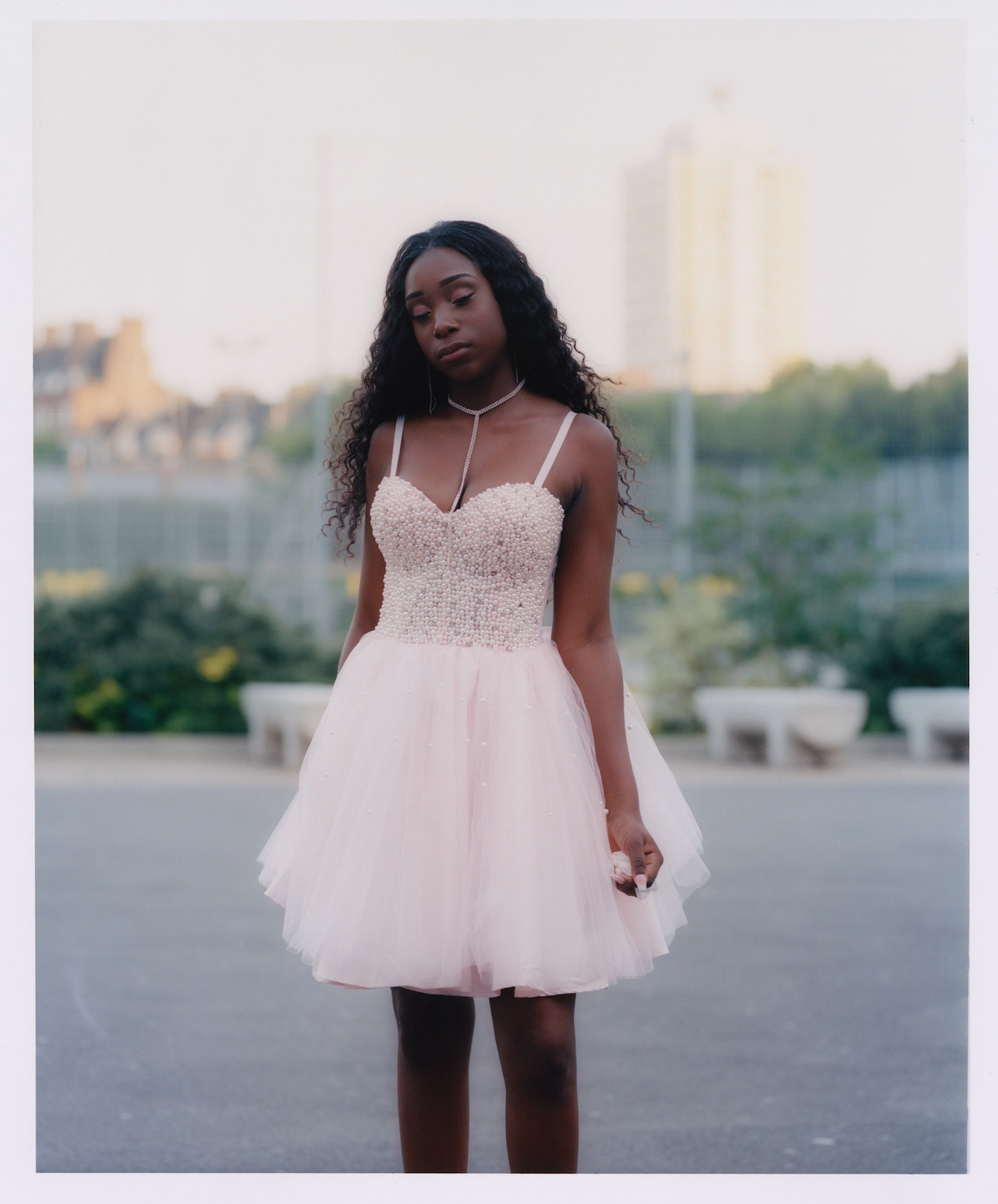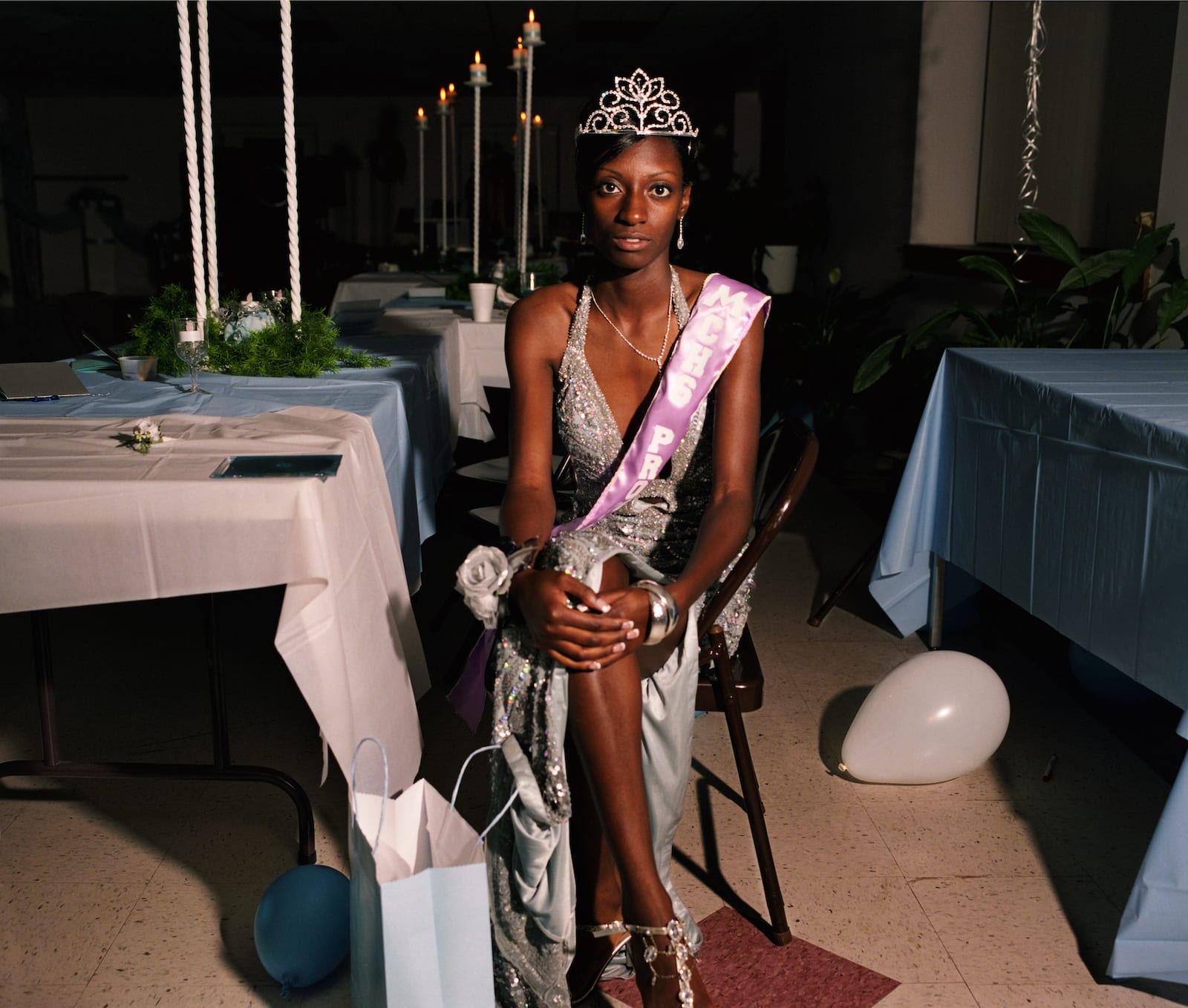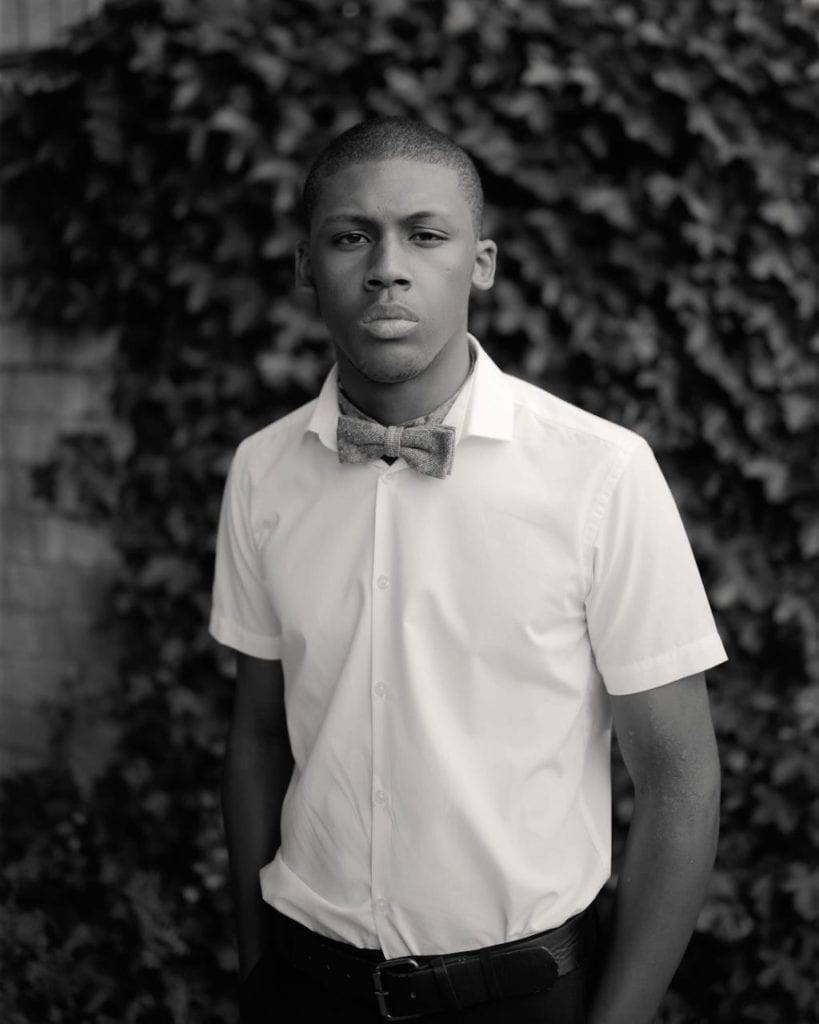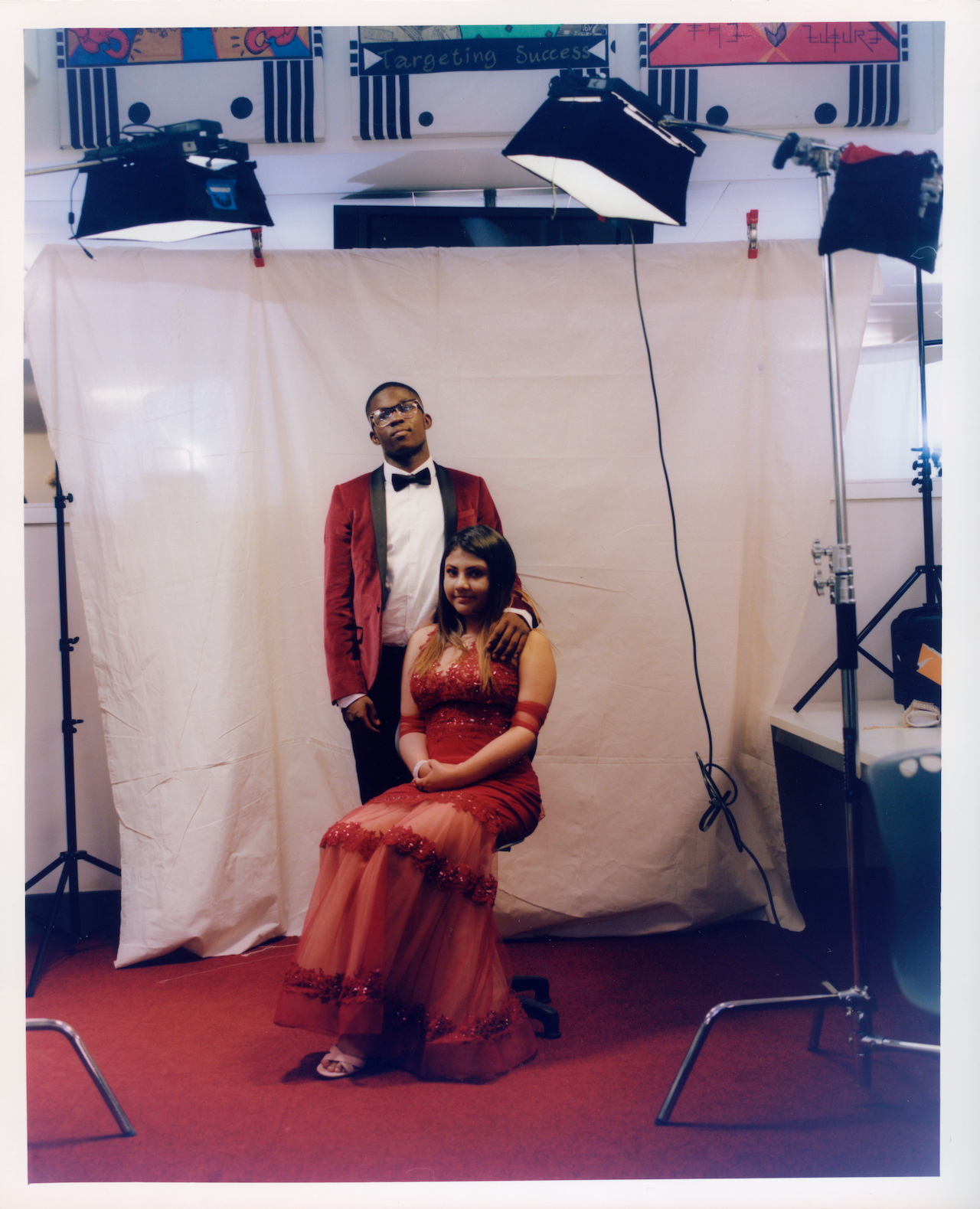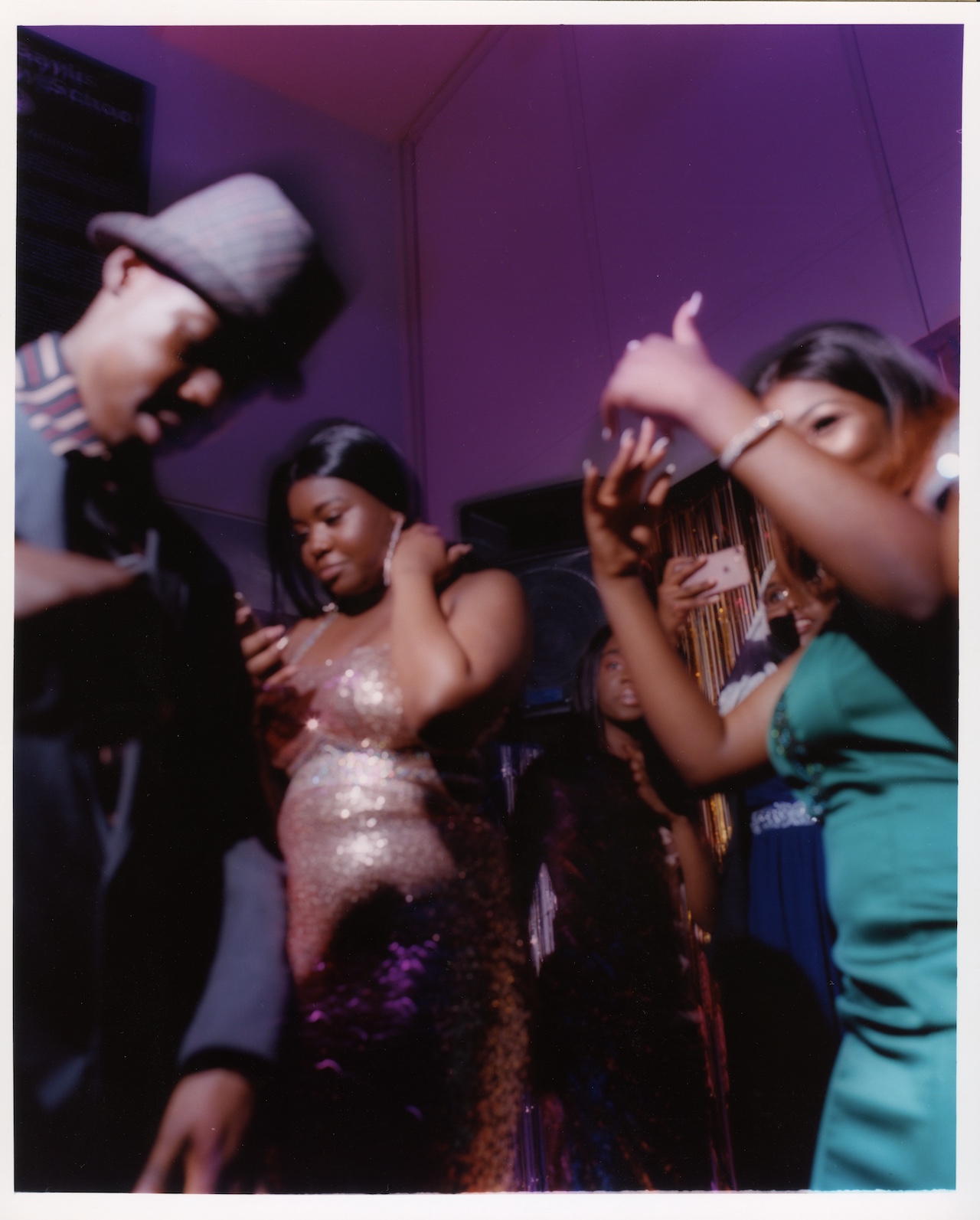From Mary Ellen Mark and Gillian Laub to Alice Mann and Lewis Khan, for many photographers, prom is an avenue to explore personal and collective identity
“Prom is a rite of passage that has always been one of the most important rituals of American youth,” said the photographer Mary Ellen Mark. “It’s a day in our lives that we never forget – a day full of hopes and dreams for our future.” Mark went to prom in 1958 at Cheltenham High School, Pennsylvania. She was the head cheerleader and wore a white floral dress and pearls. Her date Stuart, “just a friend”, wore a white dinner jacket and bow tie. “The world was ours,” she said. “Or so we thought.”
An obsession with traditions and rituals defined Mark’s career, and prom was no exception. She documented 12 senior proms across 10 cities in the United States from 2006 to 2009. The photographs, and a short film made in collaboration with her partner Martin Bell, describe the performance of young adulthood. A space where the unashamedly flamboyant cosies up to the insecure and uncomfortable. Arms fidget behind backs. Freshly manicured nails awkwardly grasp clutch bags. On the surface the ceremony is seemingly carefree, while quietly grappling with the transient nature of relationships. “We are all best friends tonight,” one of the students tells Mark in the film. “Literally, three hours ago, we were like, ‘I hate you, and I never want to talk to you again’.”
Prom represents something more than glamour and nostalgia. It’s an entry point to think about personal and collective identity-forming. In Mark’s depiction, the march into adulthood is a collision of the fantasy of the person you hope to become and the inherent and often unbeknown challenges of the world you are entering. The ritual is coded with markers of faith, privilege, power, politics, culture and tradition while illuminating how marginalised young folk attempt to mould themselves into the dominant cis, heterosexual, patriarchal, white norms.
Mark is not the only photographer to be captivated by the ritual of prom. Her work sits within a lineage of image-makers documenting the custom to speak about people, place and specific moments in history. In Southern Rites, Gillian Laub photographed racially segregated proms for a decade in Montgomery County, Georgia. When The New York Times Magazine published the work in 2009, the story brought national attention to the area. The following year the proms were finally integrated.
Alice Mann’s project, Khanyi’s Dance (2019), follows Khanyisa Mtulu – a student born in Philippi, one of the most dangerous townships in Cape Town – as she prepares to attend her end-of-year event, known as the ‘matric dance’.
In Lost Summer (2020), Alys Tomlinson illustrates the impact the Covid-19 pandemic has had on the lives of north London teenagers. For many of them, final exams and prom were cancelled, leaving them in a place of profound loss, unsure what their futures hold and how to navigate what’s next. Photographing the students in their prom outfits in socially distanced settings, such as backyards and local parks, Lost Summer speaks to the proms that never were.
These photographs are, in part, love letters to the optimism of youth and what it takes to persist and succeed against the odds.
In 2018, Lewis Khan began documenting a high school prom in his local neighbourhood in Vauxhall, south London. That night, he realised the event was far more significant than he initially expected. “There was something deeper happening,” says Khan. “Prom is really focusing on self-esteem, pride and self-worth. It felt special because for a lot of these young people, they encounter and get burdened with negative stereotypes being inner-city kids – but prom is about elevating that sense of self and achievement. I was fascinated by documenting this and amplifying it.”
For the last four years, Khan has experimented with a range of imaging techniques in his ongoing work, Leavers, to craft a rich and textured depiction of this critical moment in teenage life. With images that are exuberant and alive, he refocuses our gaze to the wonderful and beautiful, meditating on the ways small moments can shape and embolden us, even within challenging and uncertain times. There is no restraint – just joy. Khan provokes a complex tenderness for a generation actively working to understand their present moment and collective past.
These photographs are, in part, love letters to the optimism of youth and what it takes to persist and succeed against the odds. As students graduate into a new era of global instability, these images remind them to marvel at their achievements, relationships and, most importantly, their humanity.

